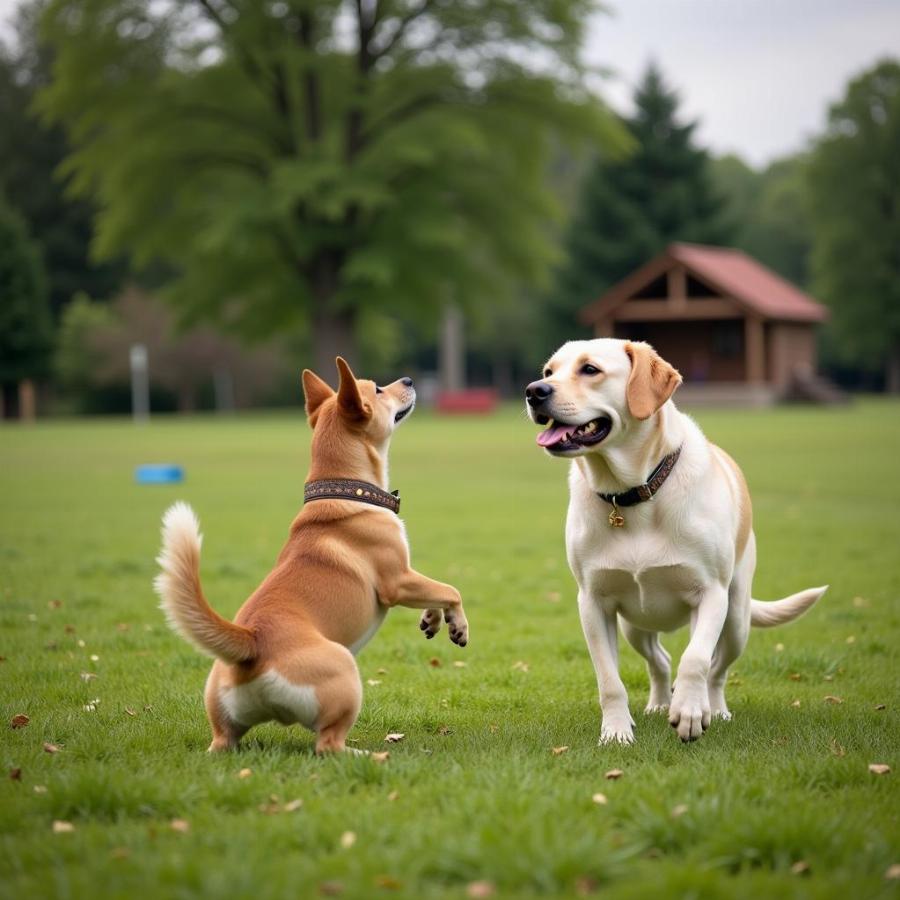Whistle training for dogs offers a unique and effective way to communicate commands over long distances. It’s a popular method used by hunters, dog sport enthusiasts, and pet owners alike. This comprehensive guide will explore the ins and outs of whistle training, covering everything from choosing the right whistle to teaching advanced commands. Whether you’re starting with a puppy or an adult dog, we’ll provide you with the knowledge and techniques you need to successfully implement whistle training.
Choosing the Right Whistle for Your Dog
The first step in whistle training is selecting the appropriate whistle. There are various types available, each with its own unique frequency and features.
- Silent Whistles: These whistles emit ultrasonic sounds that are inaudible to humans but can be heard by dogs. They are a great option for training in populated areas or for sensitive dogs who may react negatively to loud noises.
- Pea Whistles: These classic whistles produce a clear, sharp sound that carries well over distance. They are a good choice for hunting dogs or for training in open fields.
- Dual-Tone Whistles: These whistles offer two different tones, allowing you to communicate a wider range of commands. They are suitable for advanced training and complex commands.
Choosing the right whistle depends on your individual dog and training goals. Consider the environment you’ll be training in, the sensitivity of your dog’s hearing, and the complexity of the commands you plan to teach.
Understanding the Basics of Whistle Training
Whistle training relies on associating a specific whistle sound with a desired behavior. This requires consistency, patience, and positive reinforcement. Begin by associating the whistle sound with a basic command your dog already knows, such as “sit” or “come.”
- Start Close: Begin training in a quiet, distraction-free environment. Blow the whistle and immediately give the verbal command, followed by a treat or praise when your dog obeys.
- Gradually Increase Distance: As your dog begins to understand the association, gradually increase the distance between you and your dog while using the whistle.
- Use Positive Reinforcement: Always reward your dog for responding correctly to the whistle. This could be with treats, praise, or a favorite toy.
Advanced Whistle Training Techniques
Once your dog has mastered basic commands with the whistle, you can move on to more advanced techniques.
- Multiple Commands: If using a dual-tone whistle, assign different tones to different commands. This allows for more complex communication.
- Distance Training: Practice whistle commands at increasingly greater distances to build your dog’s recall skills.
- Distraction Training: Introduce distractions gradually to ensure your dog can respond to the whistle even in stimulating environments.
 Advanced Whistle Training Techniques
Advanced Whistle Training Techniques
Troubleshooting Common Whistle Training Challenges
Sometimes, dog owners encounter challenges during whistle training. Here are a few common issues and solutions:
- Dog Doesn’t Respond: Ensure your dog can hear the whistle and understands the association with the command. Retrain the association if needed.
- Dog Responds Inconsistentl: Be consistent with your whistle commands and reinforcement. Inconsistent training can confuse your dog.
- Dog Gets Distracted: Start training in a quiet environment and gradually introduce distractions.
Conclusion
Whistle training for dogs is a powerful tool that can enhance communication and control. By understanding the different types of whistles, the basics of whistle training, and how to troubleshoot common challenges, you can successfully implement this technique with your dog. Remember, patience, consistency, and positive reinforcement are key to achieving optimal results in whistle training. Start practicing today and experience the benefits of this effective training method!
FAQs about Whistle Training
- What type of whistle is best for my dog? The best whistle depends on your dog’s sensitivity and your training goals. Silent whistles are good for sensitive dogs or training in quiet environments, while pea whistles are ideal for open areas.
- How long does it take to whistle train a dog? The training time varies depending on the dog’s age, breed, and learning ability. It typically takes several weeks of consistent practice.
- Can I use a whistle for recall training? Yes, whistle training is an excellent method for recall training as it allows you to communicate over long distances.
- What if my dog doesn’t respond to the whistle? Ensure the whistle is working correctly and that your dog can hear it. Retrain the association between the whistle and the command.
- Can I use different whistles for different commands? Yes, you can use different whistles or different tones on a dual-tone whistle to communicate different commands.
- Is whistle training suitable for all dogs? Yes, most dogs can be trained to respond to a whistle.
- Can I use a whistle with a puppy? Yes, you can start whistle training with a puppy as soon as they are old enough to understand basic commands.
Further Reading on Beaut Dogs
Want to learn more about dog training? Check out these related articles on Beaut Dogs:
- dog barks at other dogs
- dog whistle to stop dogs from barking
- how do you use a dog whistle
- sound to stop dogs from barking
Beaut Dogs: Your Comprehensive Guide to the World of Canine Companions
Beaut Dogs is your one-stop resource for everything related to dog ownership, offering expert advice on breeds, care, training, and more. We provide reliable information to help you navigate the joys and responsibilities of being a dog parent. When you need expert advice, don’t hesitate to contact us via Email: [email protected] for detailed and accurate answers from Beaut Dogs.